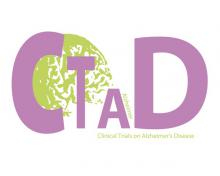Objective: To identify the prevalence, lifestyle factors, chronic disease status, and assessing the metabolic profile, comparing key differences in a cohort of subjects with non-sarcopenia/non-obesity (H), sarcopenia/non-obesity (S), non-sarcopenia/obesity (O) and sarcopenia obesity (SO) in a multi-ethnic population in west China. Design: A cross-sectional study. Setting: The communities in Yunnan, Guizhou, Sichuan, and Xinjiang provinces. Participants: We included 4,500 participants aged 50 years or older who did bioelectrical impedance in our analysis from West China Health and Aging Trend (WCHAT) study. Measurements: We measured gait speed, handgrip strength and muscle mass by using bioelectrical impedance analysis (BIA) for all participants. We defined sarcopenia using the diagnostic algorithm recommended by the Asian Working Group for Sarcopenia (AWGS). Obesity was defined as the highest sex-specific quintile of the percentage body fat. Different variables like anthropometry measures, life styles, chronic disease and blood test were collected. Analysis of variance and a multinomial logistic regression analysis adjusting for covariates were used to assess the differences of metabolic profiles among different groups. Results: Of 4500 participants aged 50 years old or older, the proportions of H, O, S, SO were 63.0%, 17.7%, 16.7% and 2.6%, respectively. And the prevalence of S subjects in men was 18.3% and 15.7% in women, while the prevalence of SO was 3.7% in men and 2.0% in women. Data showed that the prevalence of S and SO has an aging increase pattern which was opposite with O. Both S and SO tends to be older, lower educational level, without spouse, smoking, comorbidity of chronic disease, poor nutrition status, depression and cognitive decline compared to H and S seems to be worse than SO. Compared to H, S cohort showed a decrease in Vitamin D, triglyceride, albumin, fasting glucose, insulin, creatinine, ALT, nutrition scores and increase in HDL. SO cohort were observed for an increase in cholesterol, LDL, total protein and decrease in vitamin D. While O cohort showed an increase in triglyceride, cholesterol, LDL, total protein, glucose, insulin, WBC, uric acid, ALT and nutrition scores, but a decrease in HDL and vitamin D level. Conclusions: Among individuals aged 50 years old or older in West China. S, O and SO participants demonstrate distinct differences in the life-styles, chronic disease profile, and metabolic profiles. The prevalence of S and SO has an aging increase pattern contrary to O. Both S and SO tend to be older, lower educational level, without spouse, smoking, comorbidity of chronic disease, poor nutrition status, depression and cognitive decline compared to H and S looks like to be worse than SO. Besides, the S subjects seem to have more metabolic index changes than SO compared to H. While O subjects have some contrary metabolic index to S subjects.
(1) X. Liu, Q. Hao J. Yue, L. Hou, X. Xia, W. Zhao, Y. Zhang, M. Ge, N. GE, B. Dong; J Nutr Health Aging. 2020 in press



